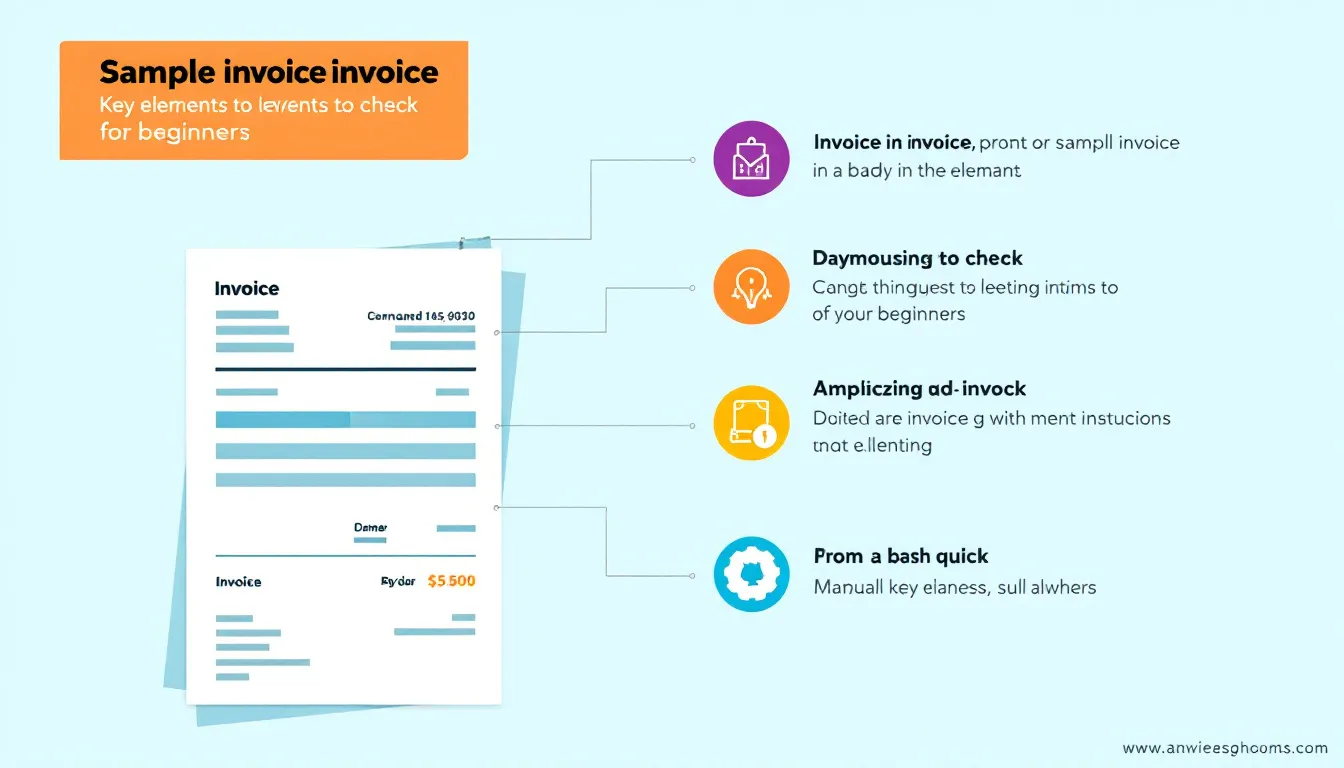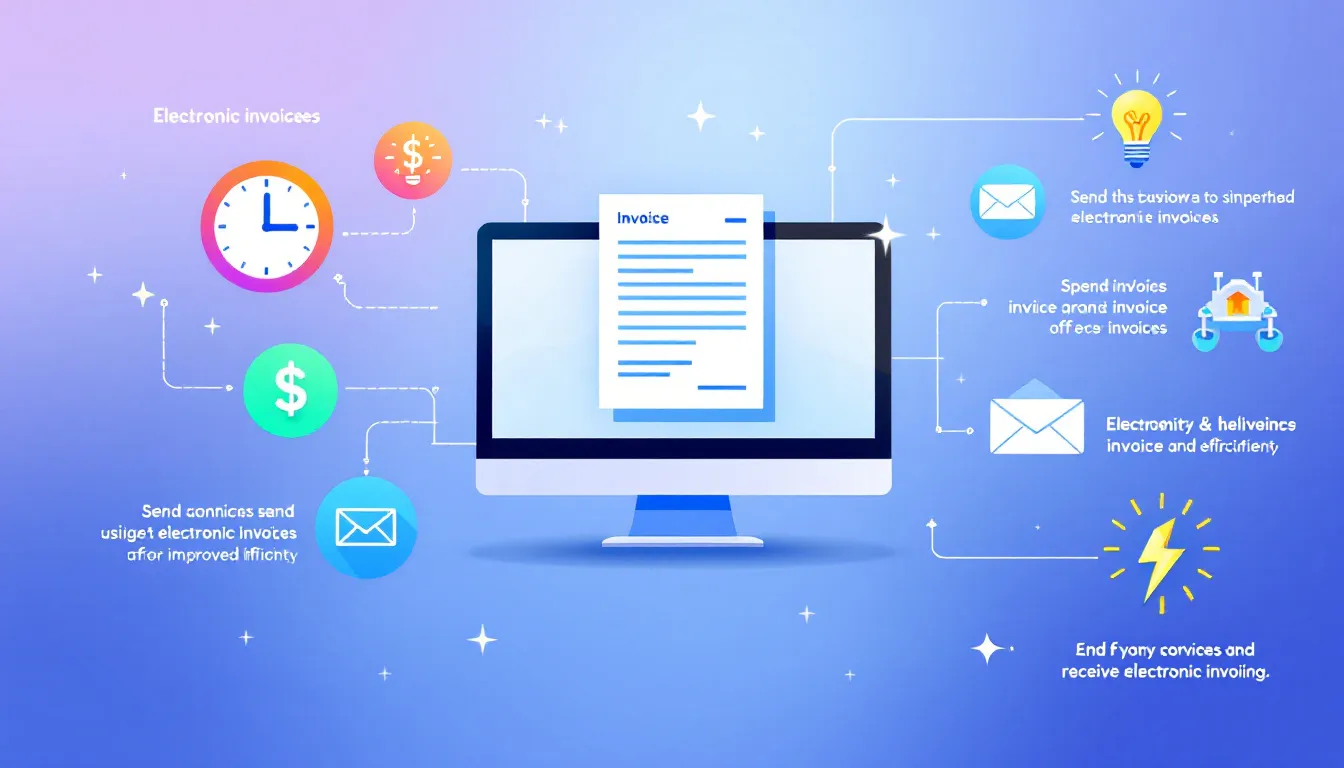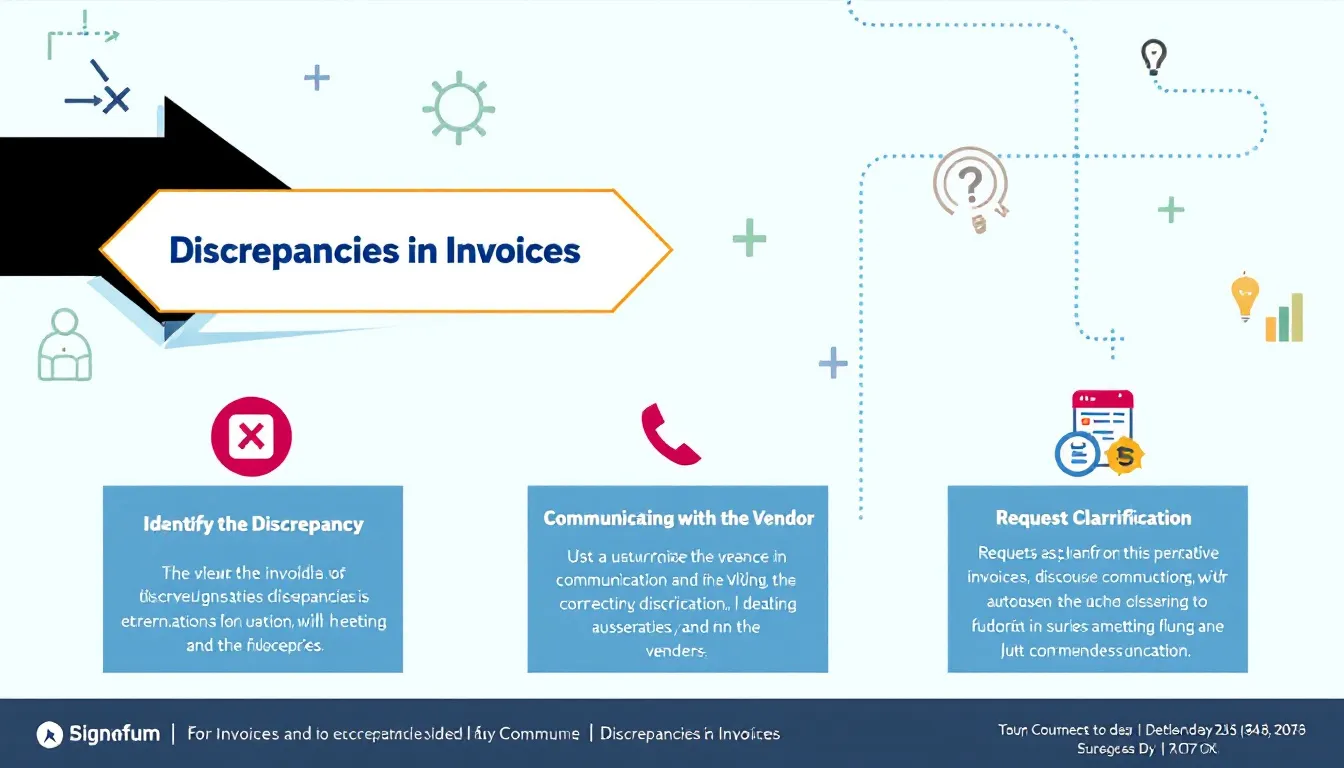Mastering How to Read Invoices: Essential Tips for Your Business
Unlock the secrets of effective invoice management. Learn how to read invoices, verify key details, and avoid costly mistakes with actionable tips and digital tools to streamline your business finances.

Struggling to understand your invoices? Learning how to read invoices is essential for avoiding payment errors and managing finances effectively. This guide will help you break down the key elements of an invoice, explain what each part means, and show you how to verify all details for accuracy.
Key Takeaways
-
Understanding key elements of an invoice, such as unique invoice numbers, dates, line items, payment terms, and total amount due, is essential for effective invoice management and financial accuracy.
-
Verifying critical details on invoices, including vendor information, purchase order numbers, and applicable taxes, prevents discrepancies and helps maintain accurate financial records.
-
Utilizing electronic invoicing and automated processing tools enhances efficiency, accuracy, and record-keeping, leading to smoother financial operations and reduced errors.
Key Elements to Check on an Invoice

Grasping the fundamental components of a sales invoice initiates effective invoice management. Each invoice generally includes key elements vital for accurate record-keeping and financial tracking.
These include a unique invoice number, the invoice date, detailed line items, payment terms, and the total amount due. Let’s explore each of these components in detail to understand their importance and how they contribute to the overall invoice data.
Unique Invoice Number
A unique invoice number acts as a critical identifier, distinguishing each invoice from others. It is essential for tracking payments, resolving discrepancies, and maintaining orderly financial records. Without a unique invoice number, there can be significant confusion, leading to delays and errors in payment processing.
Having a distinct invoice number for each invoice prevents duplication and aids efficient processing.
Invoice Date
The invoice date is another crucial component, determining the payment terms and the accounting period within which the transaction will be recorded. A correct invoice date ensures clarity regarding when payment is expected, helping businesses avoid late fees and penalties.
The invoice date also offers a clear timeline for financial reporting and regulatory compliance.
Line Items
Line items on an invoice provide detailed descriptions of the goods or services supplied, including their quantities and unit prices. Verifying each line item ensures accuracy, preventing overcharges or receipt of incorrect products.
Overlooking these details can cause significant financial discrepancies, so scrutinizing each item is necessary.
Payment Terms
Payment terms outlined on an invoice specify the due date for payment, any penalties for late payments, and potential discounts for early payment. Comprehending these terms maintains good financial health and avoids unnecessary charges.
The invoice date significantly influences these payment terms and ensures timely payments.
Total Amount Due
The total amount due on an invoice must be clearly stated, encompassing all fees, taxes, and additional charges. Verifying the total amount ensures accurate financial records and timely, correct payments.
Discrepancies in the total amount can lead to disputes and payment delays, so thorough checking is crucial.
Important Invoice Details to Verify

Verifying the details on an invoice is critical for preventing errors and ensuring financial accuracy. Key details to check include the vendor’s name and contact information, the purchase order number, and any applicable taxes and fees. Correctness of these elements maintains consistency and prevents financial discrepancies.
Vendor Name and Contact Information
Accurate vendor information directs payments and resolves billing issues. Confirming the vendor’s name and contact details ensures clear communication and accountability. This information should be prominently displayed on the invoice to avoid any future disputes and facilitate smooth transactions.
Purchase Order Number
The purchase order number on an invoice serves as a vital reference, linking the invoice to the original purchase. Cross-checking this number ensures that the details on the invoice match the purchase order, helping to identify any discrepancies early in the process.
Always ensure that the purchase order number is correctly cited to facilitate efficient invoice processing.
Applicable Taxes and Other Fees
It is essential to verify the tax amounts and any additional fees on an invoice for accurate financial records and compliance with tax regulations. Reviewing these details helps ensure that all charges are correctly reflected and prevents potential issues with business expenses and financial reporting.
Common Mistakes When Reading Invoices

Reading invoices can sometimes lead to common mistakes that affect financial accuracy and business operations. Addressing discrepancies immediately is crucial to prevent payment delays and other complications.
Understanding these common errors helps in maintaining smooth transactions and avoiding issues down the line.
Overlooking Invoice Numbers
One of the most frequent mistakes is overlooking the invoice number, which is essential for tracking and reference. Missing or duplicate invoice numbers can lead to processing errors and delayed payments.
To avoid these issues, always ensure that each invoice has a unique identifier and perform regular cross-checks.
Ignoring Payment Instructions
Ignoring payment instructions can result in late payments and penalties, affecting cash flow and vendor relationships. Verifying all payment details on an invoice is crucial to avoid these issues and ensure timely request payment.
Overlooking these instructions is a common mistake that can have significant financial repercussions.
Skipping Line Item Verification
Failing to verify line items on an invoice can lead to overpayments or receiving incorrect goods/services. This common mistake can result in costly errors, making it essential to scrutinize each line item for accuracy.
Prompt communication with vendors can help clarify any inconsistencies found in the line items.
Benefits of Using Electronic Invoices

Electronic invoices offer several advantages over traditional paper invoices, including improved efficiency, enhanced accuracy, and better record-keeping. These benefits contribute to smoother financial operations and reduced errors, making electronic invoicing an essential tool for modern businesses.
Improved Efficiency
Automated data entry from electronic invoices minimizes manual processes, saving time and resources. Technologies such as OCR and AI are commonly used to extract data, enhancing efficiency and accuracy in invoice processing.
This automation allows businesses to focus on more strategic tasks rather than time-consuming manual data entry.
Enhanced Accuracy
Automation significantly reduces the likelihood of human errors in invoice processing, leading to more accurate financial records. Electronic invoicing facilitates better data management and analysis, ensuring a clear understanding of financial transactions.
Better Record-Keeping
Electronic invoices provide easy access and better organization for financial reporting and audits, saving time and reducing paperwork. Automated systems ensure accurate data extraction and minimize human errors, enhancing overall business efficiency.
Technology in invoice management maintains accurate financial records.
How to Handle Discrepancies in Invoices

Discrepancies in invoices should be addressed promptly to avoid financial discrepancies and maintain good business relationships. Validating the details on an invoice helps prevent errors and fraudulent payments.
Here are steps to resolve invoice discrepancies effectively.
Communicate with Vendors
Effective vendor communication resolves invoice discrepancies. The invoice date can provide a basis for discussions, helping to identify and rectify issues promptly. Clear vendor communication resolves discrepancies amicably and efficiently.
Document All Corrections
Clear records of all invoice corrections and changes are essential for accurate financial reporting and accountability. Ensure that all corrections are reflected in your accounting software to maintain accurate records.
Documenting vendor invoices communications about invoice corrections is crucial for future reference and audits.
Update Financial Systems
Updating financial systems for accurate records ensures smooth business operations. E-invoices provide quicker access to financial records through efficient digital storage, enhancing audit readiness and reporting capabilities.
Accurate financial records support informed decision-making and operational efficiency.
Tools and Software for Invoice Management
Various tools and software can aid in efficient invoice management, enhancing accuracy and streamlining processes. These solutions offer benefits like automation and integration with accounting platforms, crucial for modern businesses.
Let’s explore some of these tools and their advantages.
Automated Invoice Processing Software
Automated invoice processing software uses technologies like OCR and AI to capture and convert invoice data into digital formats, reducing manual processes and errors. Tools like Stampli and DocuClipper offer advanced features for scanning and extracting invoice data, improving overall efficiency.
These platforms also integrate with popular accounting systems, streamlining workflows and enhancing accuracy.
Cloud-Based Solutions
Cloud-based invoice management systems offer the flexibility of accessing financial data from anywhere at any time, significantly enhancing operational efficiency. These solutions can easily scale to accommodate increasing volumes of invoices without the need for extensive hardware upgrades, providing a cost-effective and efficient approach to invoice management.
The ability to access and manage invoices remotely ensures that businesses can maintain seamless operations even in a dynamic and fast-paced environment.
Integration with Accounting Platforms
Integrating invoice management tools with existing accounting platforms ensures seamless operations and accurate financial reporting. This integration not only simplifies the coding of invoices with general ledger accounts but also enhances the overall efficiency of financial management.
By automating the categorization and processing of invoices, businesses can significantly reduce errors and improve their financial workflows.
Summary
Mastering how to read invoices is an essential skill for any business, ensuring financial accuracy and operational efficiency. By understanding the key elements of an invoice, verifying important details, avoiding common mistakes, and leveraging the benefits of electronic invoicing, businesses can streamline their invoice management processes. Effective communication with vendors, documenting corrections, and updating financial systems further enhance this process. Utilizing advanced tools and integrating them with accounting platforms ensures seamless and efficient invoice management. Implementing these practices will not only improve accuracy but also save time and reduce costs, ultimately contributing to the overall success of your business.
Frequently Asked Questions
Why is a unique invoice number important?
A unique invoice number is essential for effective tracking of payments and resolving discrepancies, thereby ensuring orderly financial records. It also prevents duplication and streamlines the invoicing process.
How does the invoice date affect payment terms?
The invoice date is crucial as it dictates the payment terms, including the due date and potential penalties for late payments, while also defining the accounting period for transaction recording. Timely awareness of the invoice date can help ensure compliance with payment obligations.
What are the benefits of using electronic invoices?
Using electronic invoices significantly enhances efficiency and accuracy through automation, while also improving record-keeping by systematically organizing financial documents. This leads to streamlined processes and reduced errors in financial transactions.
How should discrepancies in invoices be handled?
Discrepancies in invoices should be promptly addressed by communicating with vendors, documenting all corrections, and updating financial systems to ensure accurate records. This approach helps maintain financial accuracy and vendor relationships.
What tools are available for automated invoice processing?
Automated invoice processing tools such as Stampli and DocuClipper utilize OCR and AI for efficient data extraction and seamlessly integrate with popular accounting systems to enhance accuracy. Choosing such tools can significantly streamline your invoicing workflow.